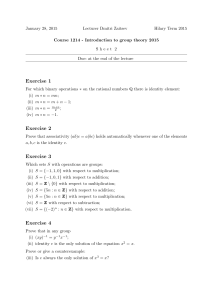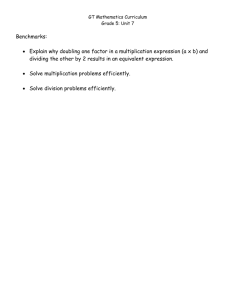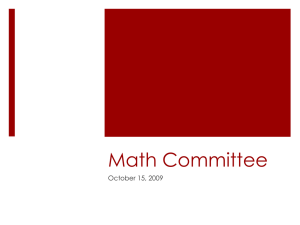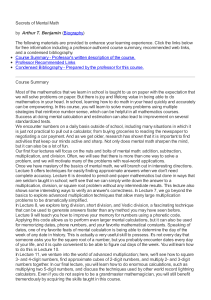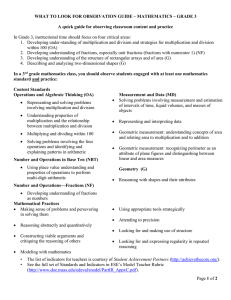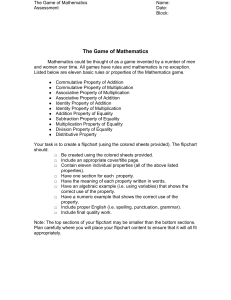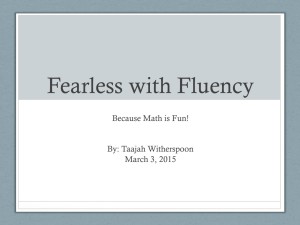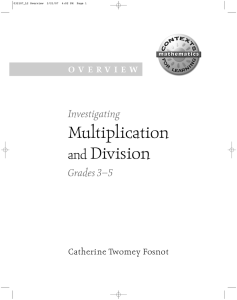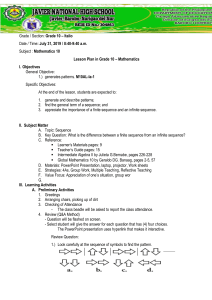Math5700 Notes Chapter 1 What is meant by an “advanced perspective?”
advertisement
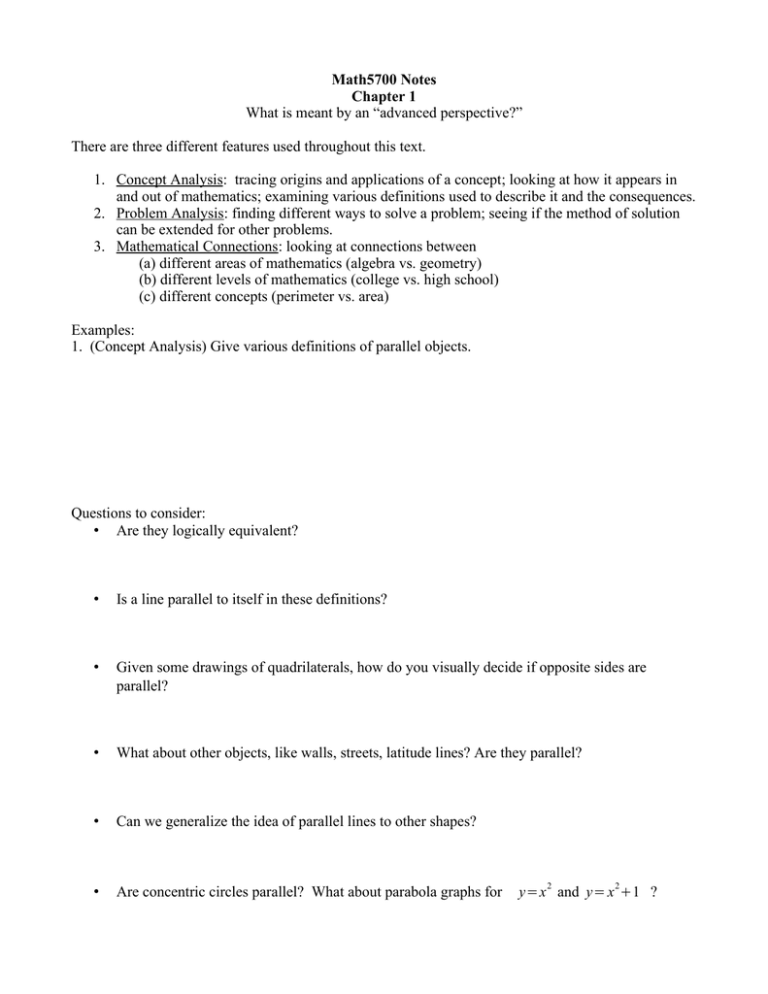
Math5700 Notes Chapter 1 What is meant by an “advanced perspective?” There are three different features used throughout this text. 1. Concept Analysis: tracing origins and applications of a concept; looking at how it appears in and out of mathematics; examining various definitions used to describe it and the consequences. 2. Problem Analysis: finding different ways to solve a problem; seeing if the method of solution can be extended for other problems. 3. Mathematical Connections: looking at connections between (a) different areas of mathematics (algebra vs. geometry) (b) different levels of mathematics (college vs. high school) (c) different concepts (perimeter vs. area) Examples: 1. (Concept Analysis) Give various definitions of parallel objects. Questions to consider: • Are they logically equivalent? • Is a line parallel to itself in these definitions? • Given some drawings of quadrilaterals, how do you visually decide if opposite sides are parallel? • What about other objects, like walls, streets, latitude lines? Are they parallel? • Can we generalize the idea of parallel lines to other shapes? • Are concentric circles parallel? What about parabola graphs for 2 2 y=x and y= x +1 ? 2. (Problem Analysis) Problem: Jane has an average of 87 after 4 tests. What score does she need on the fifth test to average 90 for all five tests? How do you solve it? What is the answer? How can you generalize the problem? 3. (Mathematical Connections) Fill in this table for addition and multiplication. Group Properties p ,q , r ∈ R Addition on R closure p+q ∈ R commutativity p+q=q+ p associativity p+( q+r )=( p+q)+r identity ∃ 0 ,∋ 0+ p= p+0= p inverse ∀ p ∃ − p ∋ p+(− p)=0 a , b , c∈ R + Multiplication on R Corresponding Properties Addition p ,q , r ,∈ R a , b , c ∈ R+ m , n∈W Multiplication p+ p=2p p+ p+ p=3p p+ p+ p+...+ p =mp ⏟ m times mp+np=( m+n) p 0p=0 m( p+q)=mp+mq m(np)=( mn) p More Corresponding Properties Addition −1⋅p=− p −1(− p)= p p−q= p+(−q) p+q=r iff p=r−q Multiplication ( p−q)+(r −s)=( p+r )−(q+s ) ( p−q )−(r −s)=( p+s )−(q+r ) 1 1 1 p+ q= ( p+q) 2 2 2 1 1 1 p+ p+...+ p = p n n n ⏟ n times m ( 1n ) p=( 1n ) mp=( mn ) p

